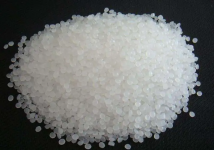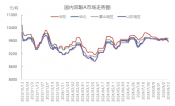read: 854 time:2025-07-17 15:27:49 from:化易天下
When working with PVC (polyvinyl chloride) pipes and fittings, one of the most common challenges is removing excess PVC glue. This glue, often called PVC cement, forms a strong bond that is essential for creating leak-proof connections. However, if you make a mistake during the application or need to redo a section, you may find yourself asking, "Will acetone remove PVC glue?" This article will delve into the effectiveness of acetone in removing PVC glue, examining the chemical interactions, application methods, and potential risks.
PVC glue, or PVC cement, is a solvent-based adhesive specifically designed for bonding PVC materials. It typically contains a mixture of solvents like tetrahydrofuran (THF), methyl ethyl ketone (MEK), and cyclohexanone. These solvents temporarily soften the PVC material, allowing the pipe and fitting to fuse together as the glue cures. Because of this strong chemical bond, removing PVC glue after it has cured can be quite challenging.
Acetone is a powerful solvent commonly used in the chemical industry for cleaning and thinning purposes. It is effective at breaking down a wide range of substances, particularly organic compounds. Given its strong solvent properties, you might wonder, "Will acetone remove PVC glue?" The answer is yes, but with some important caveats.
When acetone is applied to fresh PVC glue, it can soften and dissolve the adhesive, making it easier to wipe away. However, once the glue has fully cured and the bond is set, acetone becomes less effective. This is because the PVC glue has already chemically bonded with the PVC material, creating a solid, integrated structure that acetone alone may not easily break down.
If you decide to use acetone to remove PVC glue, it's essential to follow proper procedures to maximize its effectiveness:
Apply Acetone Before the Glue Cures: If you notice excess glue while it's still wet or tacky, immediately apply acetone using a cloth or brush. Gently rub the area until the glue dissolves and can be wiped away.
Soak the Area: For stubborn glue spots, soak a cloth in acetone and place it over the affected area. Leave it for several minutes to allow the solvent to penetrate the glue. Then, use a scraper or cloth to remove the softened glue.
Safety Precautions: Acetone is highly flammable and can cause skin irritation. Always use it in a well-ventilated area, wear protective gloves, and avoid direct contact with your skin.
While acetone can be effective at removing PVC glue, it's essential to consider the potential risks. Prolonged exposure to acetone can cause the PVC material itself to soften or become damaged, particularly if it's used in large quantities or left on the surface for too long. Additionally, acetone can dull the finish of PVC, leaving a matte appearance where it was applied.
Moreover, acetone is not always effective on fully cured PVC glue. In such cases, mechanical methods, such as scraping or sanding, may be necessary to remove the adhesive. However, these methods can also damage the underlying PVC material if not done carefully.
So, will acetone remove PVC glue? The answer is that acetone can be effective in removing fresh or partially cured PVC glue but may struggle with fully cured adhesive. When using acetone, it's crucial to apply it promptly and carefully to avoid damaging the PVC material. Always consider the state of the glue and the potential risks before proceeding.
In summary, while acetone can be a helpful tool in your arsenal for cleaning up PVC glue, it may not always be the best solution for every situation. Assessing the condition of the glue and the PVC material will guide you in choosing the most appropriate method for removal.

Jincheng Petrochemical's 300000 ton polypropylene plant successfully trial production, 2024 polypropylene market analysis

The ABS market remains sluggish, what is the future direction?

Market differentiation of bisphenol A intensifies: prices rise in East China, while prices generally decline in other regions

The production method and process flow of silicone acrylic lotion, and what are the common raw materials